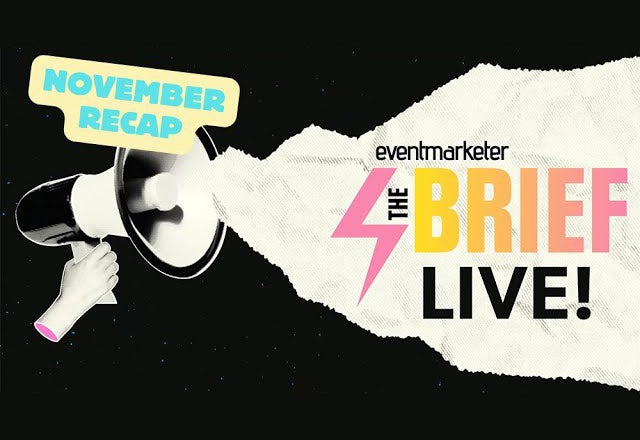
The phrase “content is king” has become a marketing cliché, but that doesn’t make it any less true. The problem is that many marketers get so caught up in creating a regular stream of content that they forget what makes B2B content matter in the first place.
In order for your content to resonate with your audience, it has to be useful—otherwise, it will simply be ignored. In fact, research from marketing insights firm Beckon suggests that 19 out of 20 pieces of brand content get little to no user engagement.
According to Beckon, even though content creation grew 300 percent between 2015 and 2016, engagement levels over the same period remained static, meaning that it’s more important than ever to create compelling content that holds value for the reader.
Here’s a baker’s dozen of ideas on what makes B2B content useful:
1- Answer a question: Spend some time thinking about what your audience looks like, and then try to get inside their heads and figure out what questions they might want answered. You can find inspiration by using Answer the Public, a free tool which displays the most popular search queries for any keyword you specify.
2- Say something new: Most businesses are already in the habit of producing a steady stream of content. That means the web is overflowing with company blogs that all say pretty much the same thing. To stand out, you need to say something original, ideally by undertaking your own research. If you don’t have the means of doing so, try to put an original spin on something that’s already been said.
3- Show off: Think of your blog as a place to showcase your industry knowledge and expertise, and position yourself as an authority. Stay abreast of the latest developments in your industry by subscribing to newsletters, magazines, and any other resources you can get your hands on. Doing this will help ensure you have your finger on the pulse of change in your field, enabling you to comment on or add to the debate. Think of creative ways to position yourself as a thought leader and expert in your field, such as offering an online training course, hosting an event or recording video tutorials to share your knowledge.
4- Use case studies: Mediocre B2B content says “Hey, look at us: you should use our products and services because they’re amazing!’” Useful content says “Client X came to us with a problem. This is how we solved it. Try to use case studies from a range of industries; that way you’ll appeal to a broader selection of your audience.
Software testing company SOASTA is an example of a company that makes excellent use of case studies. Aside from the fact that they have some seriously big-name clients on their books, they also segment their case studies by sector, so that users can hone in on case studies and testimonials that are relevant to their industry. Each case study also includes ‘related customer’ links to help keep potential clients reading.
5- Use how-to guides: What could be more useful than a how-to guide? How-to guides not only answer a question, but also provide ample opportunity for links to your products and services. How-to guides can also be a great example of evergreen content 6that’s always relevant and brings in a steady stream of traffic to your website.
6- Cite quality sources: You should be able to back up any claims you make with facts from third-party sources, and link back to them throughout your B2B content. Doing so will enhance your credibility and add further value for your readers. Always try to cite high-quality sources, such as national newspapers and established brands within your industry. To help sort the wheat from the chaff, you can use MozBar to get an idea of a website’s Domain Authority, a numerical score which indicates how well a site ranks on search engines.
7- Be up to date: It’s all well and good citing high quality sources, but if the information you’re citing is more than a couple of years old, there’s a good chance that it will have become obsolete. Thankfully, you can use Google search tools to only include results from the past year, month or even hour
8- Be consistent: While it’s a good idea to encourage all of your staff to get involved with content creation, you also need to make sure that you have a consistent brand voice. To achieve this, it can be helpful to think of your brand as a person. If your brand were a celebrity, who would they be? Offbeat and witty, like The Great British Baking Show’s Sue Perkins? Or suave and sophisticated, like George Clooney? One surefire way of keeping your content consistent is to nominate a member of your team to act as a brand champion. They can have the final say on all the content you produce and ensure that it adheres to your brand guidelines.
9- Don’t forget to proofread: It doesn’t matter how great the content of your B2B content is—if it’s riddled with typos, misspellings and grammatical errors, it’ll be ignored by your audience and reflect badly on your brand. Ideally, your brand champion will also be a bit of a wordsmith or grammar nerd; that way they can catch any errors in your content before it hits the web. They can also make sure that stylistic conventions are consistent across all your content: for instance, will you use American spellings (color/center) or British (colour/centre)? A tool like Grammarly can help you maintain a consistent, word perfect voice.
10- Forget the bottom line: It may seem counterintuitive, but sometimes it pays to produce content that doesn’t directly talk about your products or services. Instead, you can use your content to bolster your brand image and appeal to your target demographic. For instance, a guitar company could review albums on its blog—sure, it may not lead directly to any sales, but it will appeal to their audience and keep both new and established customers coming back for more.
When it came to supporting their suite of creative software, Adobe clearly decided that a company blog just wasn’t going to cut it; instead, they opted for an entire magazine-style website dedicated to ‘digital marketing strategies, trends, and insights’, complete with features, opinion pieces, and interviews with industry leaders – and if that’s not useful, I don’t know what is.
11- Give your audience credit: Treat your audiences to the compelling, thought-provoking, challenging content that they deserve, and they’re more likely to repay you with their custom. Lazy, unoriginal content or completely self promotional will be ignored out of hand—and rightly so.
12- Use social media: Social media is the best way of getting your content out there— and it’s free. You should get into the habit of sharing your content on as many social platforms as possible. You could also encourage your colleagues to share your content on their personal feeds. That said, don’t overdo it – if you share the same content over and over again, your audience are likely to switch off pretty quickly. There are a number of tools to make your social media activity more productive, helping you save time and allowing you to focus on other tasks.
13- Use your data: It’s no good to simply push your B2B content out into the world and assume that it’s done its job. Instead, you should use web analytics (such as Google Analytics and the analytics services that come built into most social media platforms) to figure out what works and what doesn’t, paying special attention to metrics like social shares, bounce rate and click-through-rate. If, for instance, you find that infographics don’t get much engagement from your audience, then consider focusing on video content instead. Also consider A/B testing different variations of the same content. Present the same data in three different ways (e.g. a video, an infographic and a blog post) and see which performs best.
Magnus Linklater is a writer for Bespoke Digital Bristol.



